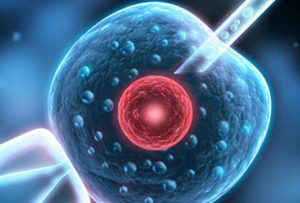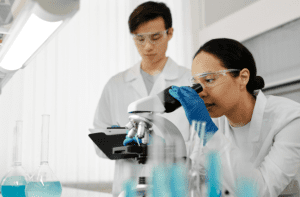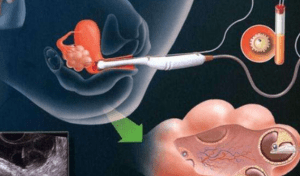Third-generation in vitro fertilization (IVF) technology occupies a crucial place in modern reproductive medicine, especially for couples who face chromosomal abnormalities, carry genetic defects, or experience recurrent miscarriages. Through genetic diagnostic techniques, this technology is able to weed out abnormal embryos and ensure the transfer of healthy embryos, thereby increasing the chances of a successful pregnancy and reducing the risk of genetic disorders. However, many families are still unsure about the exact process and timeline of third-generation IVF. In this article, we will introduce the definition, cost, time required and specific process of 3rd generation IVF in detail to help readers fully understand this advanced reproductive technology.

What is the third generation IVF technique
Preimplantation Genetic Diagnosis (PGD/ PGS)
The heart of third generation IVF technology lies in pre-implantation genetic diagnosis (PGD/ PGS) of embryos. By genetically testing embryos, doctors can screen for healthy embryos for transfer, thereby reducing the transmission of genetic diseases. This technique is especially important for couples who carry genetic defects and can significantly increase the chances of a healthy baby being born. According to the American Society for Reproductive Medicine (ASRM), IVF cycles using PGD/ PGS technology have significantly higher success rates than traditional IVF techniques.
Clinical Applications and Benefits
Third-generation IVF technology is widely used around the world. For couples who have had multiple miscarriages or failed during IVF, PGD/ PGS technology offers a more guaranteed option that can significantly improve pregnancy success rates. With this technology, physicians can rule out genetic defects before embryos are implanted, thereby improving the health and success of pregnancies. Studies have shown that PGD/ PGS technology is effective in reducing the incidence of recurrent miscarriages and improving embryo implantation rates.
Common Indications
The third generation IVF technique is used in a variety of situations, including: couples with chromosomal abnormalities, couples carrying single gene genetic disorders, couples with a history of recurrent spontaneous abortions, and couples of advanced reproductive age. With this technique, doctors can rule out genetic defects before the embryos are implanted, thereby improving the health and success of the pregnancy. This brings new hope to many families who would otherwise have difficulty realizing their dreams of having children.
Three Generation IVF Costs in the United States
Cost components
The cost of third generation IVF consists of several major components:Ovulation stimulating drugs, egg collection and sperm retrieval, embryo culture, genetic screening (PGD/PGS), embryo transferand the cost of related medical services. The exact cost varies depending on the hospital and treatment plan. Generally, the total cost of third generation IVF ranges from $20,000 to $40,000, which includes all medical procedures and related services.
Cost Comparison of Major Reproductive Medicine Centers
Different reproductive medicine centers charge different rates. For example, the IVF package at California Center for Reproductive Medicine (CCRH) costs ¥$29,500, which includes ovulation stimulating drugs and PGS screening of 10 embryos. The Reproductive Medicine Center of New Jersey (RMANJ) package costs ¥298,000, including ovulation stimulation drugs and PGS screening of 10 embryos, and provides full Chinese language services and accommodations.
The difference in fees between centers is mainly in the services included and additional services.
Cost impact factors
There are many factors that affect the cost of third generation IVF, includingPatient's age, health status, chosen protocol for ovulation, number of embryos screened, and specific medical servicesetc. In addition, the location and level of service of different reproductive medicine centers may also have an impact on costs. For example, reproductive centers located in large metropolitan areas may charge more due to higher operating costs, while some centers located in suburban areas or small cities may offer more competitive rates.

How many days does IVF take for three generations?
Timeline from preparation to completion
The entire process of third generation IVF usually takes about 3 months from the initial consultation to the completion of the embryo transfer. This includes a number of sessions such as the preliminary medical examination, documentation, ovulation induction, egg retrieval and sperm retrieval, embryo culture, genetic screening and embryo transfer. The time required for each part of the process may vary from individual to individual, but overall, the entire cycle is roughly about 90 days.
fertile phase
The ovulation induction phase usually lasts about 9 to 14 days. During this period, a woman will need to receive daily injections of ovulation stimulating drugs and undergo regular ultrasounds to monitor the development of the follicles. When the follicles are mature, the doctor will schedule an egg retrieval procedure. The use and dosage of ovulation stimulating drugs will be adjusted on an individual basis to ensure optimal follicle development.

Embryo screening and transfer
The embryo culture and screening phase takes about 5 to 10 days. PGD/ PGS screening is performed on the fifth or sixth day of embryo culture and results are usually available within a week. After screening, healthy embryos can be transferred when the woman's uterine lining is in the right condition, and a pregnancy test can be performed on the 14th day after transfer. The exact timing of this process will vary depending on the individual patient and the medical center's schedule.
The process of third generation IVF
1. Physical examination and archiving
Before starting IVF treatment, couples are required to undergo a comprehensive physical examination, including a basic physical examination, screening for infectious diseases and chromosome screening. Women will also need to undergo a sex hormone six test on day 2 or 3 of their menstrual cycle and men will need to undergo a semen analysis. The purpose of the physical examination is to ensure that the couple is physically fit for IVF treatment and to rule out any factors that may affect the effectiveness of the treatment.
2. Ovulation promotion and egg retrieval
Ovulation induction is a key step in IVF treatment. Depending on the patient's individual situation, the doctor will develop a personalized ovulation induction program. During ovulation induction, women need to take daily injections of ovulation stimulating drugs and undergo regular ultrasound examinations. When the follicles are mature, the doctor will schedule an egg retrieval procedure. The male will also need to undergo sperm retrieval on the same day. If a sperm donor is being considered, sperm will need to be purchased and thawed in advance.

3. Embryo culture and screening
After egg retrieval, sperm and eggs are fertilized in vitro in the laboratory and the embryos are cultured in a petri dish until day 5 or 6 to form blastocysts. The blastocysts are then screened for PGD/ PGS to ensure that the transferred embryos are healthy. Screening results are usually available within a week. If a larger number of embryos are screened, it may take longer to complete the screening of all embryos.
4. Embryo transfer and pregnancy tests
Screened healthy embryos will be transferred when the woman's uterine lining is in the right condition. The transfer procedure is quick and simple and can usually be done on an outpatient basis. The pregnancy result is confirmed by a blood test on the 14th day after the transfer. If the pregnancy is successful, the patient is instructed by her doctor to continue medication to preserve the pregnancy. If the pregnancy is not conceived, the patient is prepared for the next transplant.
summarize
Third generation IVF technology offers hope to couples who are facing fertility difficulties. Through advanced genetic screening techniques, the transmission of genetic diseases can be effectively avoided, ensuring the transfer of healthy embryos. Although the process involves multiple steps and takes about 3 months, its high success rate and safety make it the first choice for many couples. Understanding the exact process and timeline of third-generation IVF can help patients better prepare for and cope with this important reproductive treatment process. It is hoped that the information provided in this article will help readers gain a more comprehensive understanding of third-generation IVF technology and provide scientific guidance for realizing their fertility dreams.






